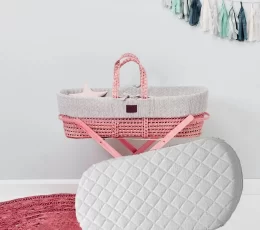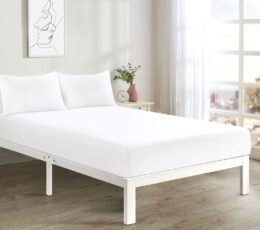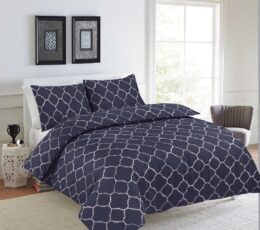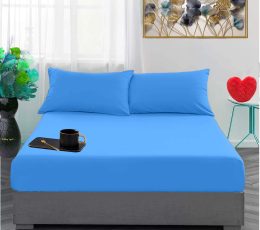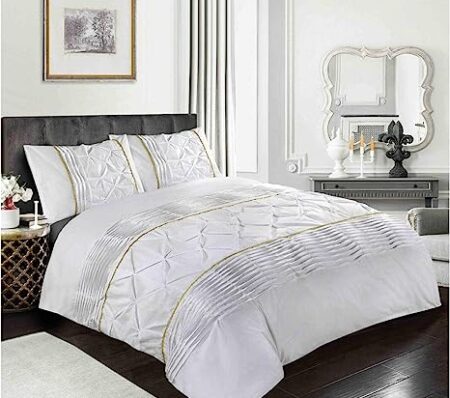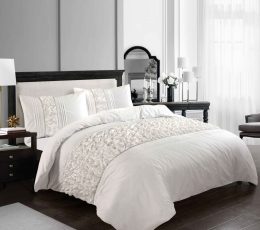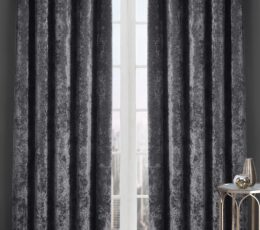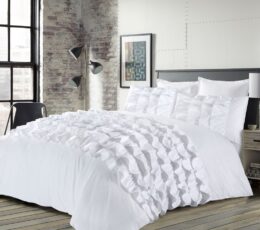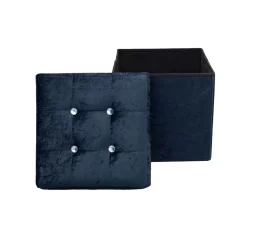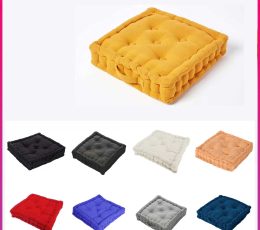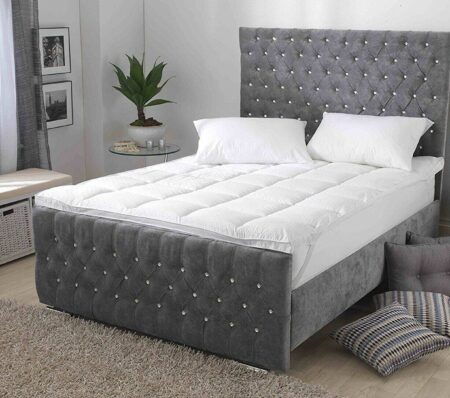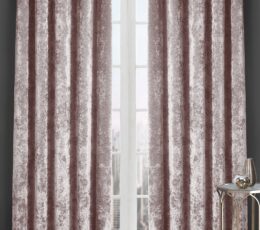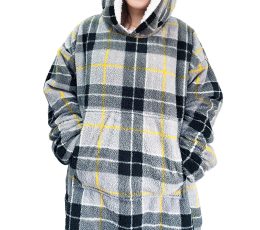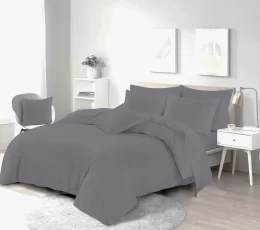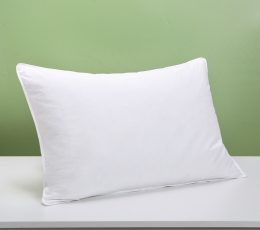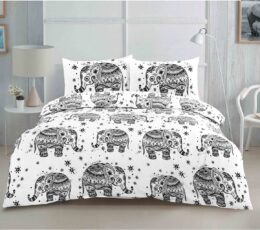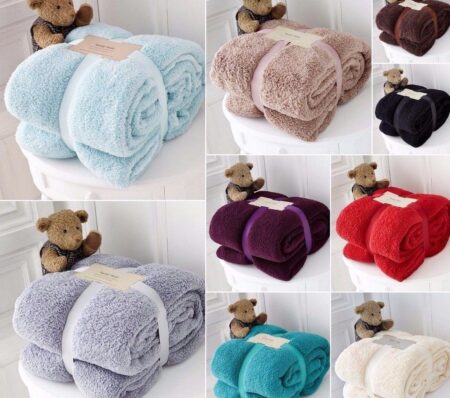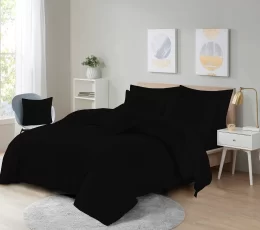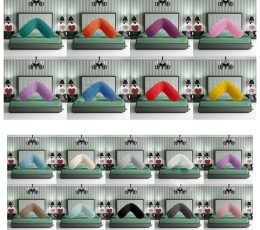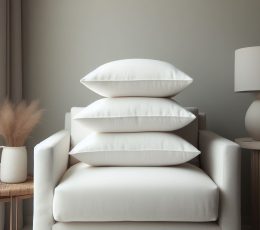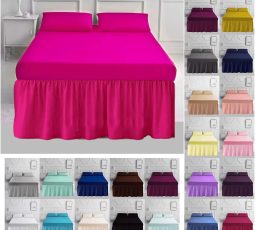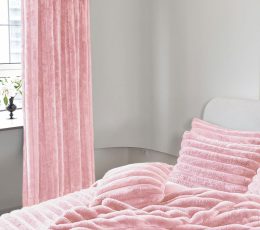Comfortable Pillows play a crucial role in our daily lives, providing comfort and support as we rest at night or relax during the day. However, like any other household item, pillows have a limited lifespan. Understanding how long pillows last and how to prolong their longevity is essential for ensuring optimal sleep quality and hygiene. We recommend to understand first about the pillow guide before getting the new pillow.
Our hotel collection pillows last longer than the other pillows. The reason is their high quality and the care you take off your pillows. So before getting the new pillow, we recommend buying it from a reputed seller. But does the expensive pillow last longer than the cheap pillows? In this guide, let us derive how long a cheap pillow lasts compared to quality by referring to every other aspect we need to know about the pillows.

Different Types of Pillows
There are main types of pillows that have their specification. Every pillow has its own uniqueness that provides comfort to their sleepers. Below here, we discuss some of the most popular pillows. People like to use daily:
- Memory Foam Pillows: These are crafted from viscoelastic foam that conforms to the shape of your head and neck, providing personalized support and alignment. Memory foam pillows are known for their pressure-relieving properties and are ideal for individuals with neck pain or stiffness.
- Down Pillows: With duck feather pillow or geese’s soft, fluffy undercoating, down pillows offer a luxurious and cloud-like feel. They provide excellent insulation and breathability, making them suitable for all seasons. However, down pillows may require regular fluffing to maintain their loft and shape.
- Synthetic Pillow: Synthetic pillow are filled with polyester fibers, offering a budget-friendly alternative to natural options. These pillows are hypoallergenic and ideal for individuals with allergies or sensitivities. They are also machine washable, making maintenance hassle-free.
- Latex Pillow: Latex pillows are made from natural or synthetic foam, providing a supportive and resilient sleep surface. They offer a balance of softness and firmness, promoting proper spinal alignment and pressure relief. Latex pillows are resistant to dust mites, mold, and mildew, making them a durable and hypoallergenic choice.
- Hybrid Pillow: Hybrid pillows combine materials, such as memory foam, latex, or down alternative, to offer a versatile sleep experience. These pillows aim to provide the benefits of multiple pillow types in one, catering to various sleep preferences and needs.
From this you might get confuse it that there are so much type of the pillows then what pillows do hotels use that make so much fluffy and comfortable. Well the selection of the pillow for the hotels are mainly consider with the comfort for every sleeper that uses the pillow.
How Long Do Pillows Last:
The lifespan of a pillow can vary depending on several factors, including its quality, construction, usage, and maintenance. On average, most pillows must be replaced every 1 to 2 years. Here’s a breakdown of the typical lifespan for different types of pillows:
- Memory Foam Pillows: High-quality memory foam pillows can last 3 to 5 years or even longer with proper care. Over time, the foam may lose its resilience and develop indentations, indicating the need for replacement.
- Down Pillows: Down pillows typically have a shorter lifespan of 1 to 2 years due to the natural breakdown of the feathers and loss of loft. Regular fluffing and occasional professional cleaning can prolong their usability.
- Synthetic Pillows: Synthetic pillows are more durable than natural and can last 2 to 3 years or more with regular washing and fluffing. However, they may flatten over time, requiring replacement. For Example, we can consider the hollow fibre cushions or pillows.
- Latex Pillows: Latex pillows are among the most durable options, lasting 5 to 7 years or longer with proper care. They maintain their shape and support, making them a long-term investment in sleep quality.
- Hybrid Pillows: The lifespan of hybrid pillows varies depending on the materials used. Generally, they can last between 2 to 4 years with proper maintenance. You can consider to use our help on choosing the right cushion filling for your sleep.

Making Your Pillows Last Longer:
The pillow’s lifespan mainly depends on how frequently you use it and how you use it. The maintenance of your pillow includes several steps of caring that we describe below:
- Use Pillow Protectors: Encase your pillows in protective covers to shield them from stains, spills, dust mites, and other contaminants. Pillow protectors are usually machine washable and defend against wear and tear.
- Rotate and Fluff Regularly: Rotate your pillows every few months to ensure even distribution of filling and prevent uneven wear. Fluffing your pillows daily can help restore their loft and maintain their shape for longer.
- Follow Care Instructions: Always follow the manufacturer’s instructions when washing and drying your pillows. Most pillows can be machine washed on a gentle cycle with mild detergent and tumble dried on low heat. Avoid using bleach or harsh chemicals, as they can damage the filling and reduce the lifespan of your pillows.
- Air Out Your Pillows: Periodically air them out by placing them outdoors in direct sunlight for a few hours. Sunlight helps to eliminate moisture, odors, and bacteria, keeping your pillows fresh and hygienic.
- Replace When Necessary: Monitor your pillows for signs of wear and tear, such as flattened areas, lumps, or unpleasant odors. If your pillows no longer provide adequate support or comfort, it’s time to invest in replacements to ensure optimal sleep quality and comfort.
How often should you replace pillows?
The frequency with which you should replace your pillows depends on several factors, including the type of pillow, its quality, and your preferences. As a general guideline, most experts recommend replacing pillows every 1 to 2 years. However, this timeframe can vary based on the following considerations:
- Different types of pillows have varying lifespans. Memory foam pillows, for example, tend to last longer than down pillows. Synthetic pillows may also have a longer lifespan than natural materials like down or feathers.
- Higher-quality pillows typically last longer than lower-quality ones. Investing in a durable, well-made pillow can extend its lifespan and provide better support and comfort.
- How often you use your pillow and how you use it can affect its lifespan. Pillows used every night will likely wear out faster than pillows used occasionally or for decorative purposes only.
Ultimately, the decision to replace your pillow should also be based on your comfort and sleep quality. If your pillow no longer provides adequate support or comfort, it may be time to replace it, even if it hasn’t reached the typical lifespan of 1 to 2 years. IF you need a help how to choose best comfort pillow for your next pillow than your search ends with this statement.
Do Unused Pillows Expire?
While unused pillows may not wear out as quickly as those used regularly, they can still expire. Factors such as exposure to air, sunlight, and humidity can contribute to the deterioration of pillow materials even if the pillow is not actively used. Dust mites and other allergens can accumulate in unused pillows, leading to hygiene issues.
It’s also worth noting that pillows stored in attics, basements, or other areas with fluctuating temperatures and humidity levels may degrade more quickly than those stored in a climate-controlled environment.
Generally, inspecting unused pillows for signs of wear, discoloration, or odor is a good idea. If a pillow appears damaged or compromised, it’s best to replace it to ensure optimal comfort and hygiene.

Signs You Need to Say Goodbye to Your Cheap Pillow
Knowing when to replace your pillow is essential for maintaining a comfortable and hygienic sleep environment. Here are some signs that indicate it’s time to say goodbye to your pillow:
- Flattened or Lumpy: If your pillow has lost shape and lacks adequate support, it’s time to replace it. Flattened areas or lumps can lead to discomfort and neck pain.
- Yellowing or Staining: Stains, discoloration, or an unpleasant odor are signs of dirt, sweat, and body oils accumulating in the pillow. Even with regular washing, pillows can become soiled over time, necessitating replacement for hygiene reasons.
- Allergy Symptoms: If you experience allergy symptoms such as sneezing, congestion, or itching when using your pillow, it may be harboring dust mites, mold, or other allergens. Replacing the pillow with a hypoallergenic option can alleviate symptoms and improve sleep quality.
- Waking Up Tired or Stiff: A worn-out or unsupportive pillow can lead to poor sleep quality and discomfort. If you wake up feeling tired, stiff, or sore, it may be time to invest in a new pillow that provides better support and alignment.
- Visible Damage: Inspect your pillow for any signs of visible damage, such as tears, holes, or exposed filling. Damaged pillows are uncomfortable, pose a risk of allergen exposure, and can affect sleep quality.
How Do You Revive an Old Pillow:
Over time, pillows can lose shape, support, and freshness due to regular use and accumulation of dirt, sweat, and body oils. However, you can revive an old pillow and extend its lifespan with proper care and maintenance. Here are some steps you can take to rejuvenate an old pillow:
- Fluffing: Fluffing the pillow to redistribute the filling and restore its loft. Gently shake and knead the pillow to loosen the fibers and help it regain its shape.
- Sunlight: Place the pillow outdoors in direct sunlight for a few hours. Sunlight helps kill bacteria and dust mites, eliminate odors, and freshen the pillow.
- Air Out: Allow the pillow to air out in a well-ventilated area. This helps remove trapped moisture and odors, leaving the pillow fresh and clean.
- Use a Pillow Protector: Consider using a pillow protector to shield the pillow from stains, spills, and dust mites. A pillow protector can help prolong the lifespan of the pillow and keep it looking and feeling like new.
- Replace the Filling: If the pillow has lost its supportiveness and comfort, consider replacing it. Many pillows come with a zipper or opening that allows you to add or remove filling as needed. You can purchase additional filling from a craft or bedding store to customize the pillow to your preference.
We always recommend to care for your bedding that helpst to improve the longevity of your bedding. There are many pillow care tips we suggest to follow for making your pillow a long time partner for your bedding.
Washing Pillows
Regular washing is essential to keep pillows clean, fresh, and allergens-free. However, washing pillows requires special care to prevent damage to the filling and maintain their shape and loft. Here’s how to properly wash pillows:
- Before washing your pillows, check the care label for any specific instructions from the manufacturer. Some pillows may be machine washable, while others require hand washing or dry cleaning.
- Wash pillows using a mild detergent suitable for delicate fabrics. Avoid using bleach or harsh chemicals, which can damage the pillow’s filling and fabric.
- If the pillow is machine washable, place it in the washing machine with a few towels to balance the load. Use a gentle cycle with warm water. Add a tennis ball or two for down or feather pillows to help fluff up the filling during the wash cycle.
- After washing, remove the pillow from the washing machine and gently squeeze out excess water. Place the pillow in the dryer with clean tennis or dryer balls to help fluff up the filling.
- Once the pillow is dry, fluff it by hand to redistribute the filling and restore its loft. Place the pillow in the dryer on a no-heat setting for a few minutes to fluff it up further.
- Pillow protectors keep pillows clean and fresh between washings. Pillow protectors are a barrier against stains, spills, and allergens, helping extend the pillow’s lifespan.
FAQs
How long does a pillow typically last?
The lifespan of a pillow can vary depending on factors such as its type, quality, usage, and maintenance. On average, most pillows last between 1 to 2 years. However, this timeframe may be shorter or longer depending on individual circumstances.
What factors affect the lifespan of a pillow?
Several factors can influence how long a pillow lasts, including its material, construction, frequency of use, exposure to moisture and sunlight, and how well it’s maintained. Higher-quality pillows made from durable materials last longer than lower-quality ones.
Can certain pillow types last longer than others?
Yes, different types of pillows have varying lifespans. For example, memory foam and latex pillows are known for their durability and can last between 3 to 5 years or more with proper care. Down pillows typically have a shorter lifespan of 1 to 2 years due to the natural breakdown of the feathers. Synthetic and hybrid pillows fall between 2 to 3 years or more, depending on the quality.
Do unused pillows expire?
While unused pillows may not expire traditionally, they can still degrade over time due to humidity, temperature fluctuations, and exposure to dust and allergens. Even if a pillow remains in its packaging or stored away, the materials inside may deteriorate, leading to decreased support and comfort.
How can I tell if my pillow needs to be replaced?
Several signs indicate it’s time to replace your pillow, including flattened areas, lumps, visible wear and tear, persistent neck or shoulder pain, increased allergy symptoms, and unpleasant odors that don’t go away with washing. If you notice any of these signs, investing in a new pillow for optimal sleep quality and comfort is a good idea.
How can I extend the lifespan of my pillow?
To prolong the lifespan of your pillow, consider using a pillow protector to shield it from stains, spills, and dust mites. Rotate and fluff your pillow regularly to maintain its shape and loft. Follow the manufacturer’s care instructions when washing and drying your pillow, and air it out periodically to remove moisture and odors.
When should I replace my pillow if it’s still in good condition?
Even if your pillow appears in good condition, replacing it every 1 to 2 years for hygiene reasons is recommended. Over time, pillows accumulate dust mites, allergens, and sweat, affecting sleep quality and overall health.
Understanding the lifespan of your cheap pillows and implementing proper maintenance practices are essential for ensuring a restful sleep environment. By identifying the type of pillows you have, assessing their longevity, and following effective care strategies, you can maximize their lifespan and enjoy quality sleep for years. We hope you understand how long cheap pillows last; we strongly suggest investing in quality pillows to get proper sleep.

